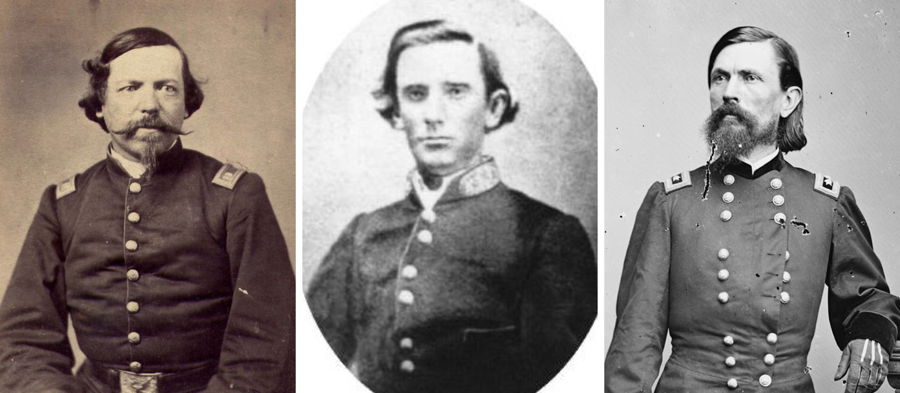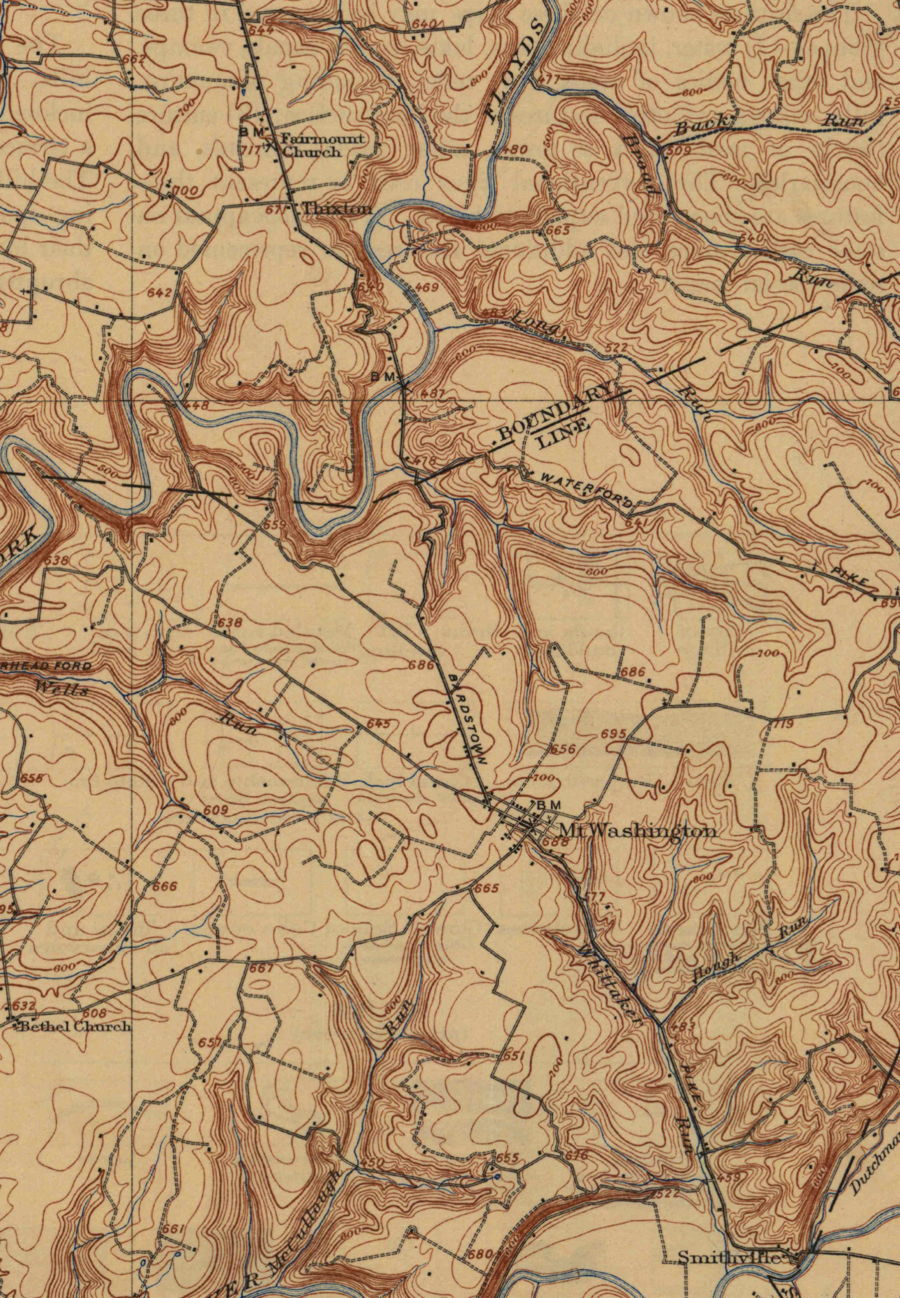
The following article by Charles Hartley was published on 22 Feb 2015. It is archived here for your reading enjoyment.
In late September and early October 1862, Mount Washington experienced a taste of Civil War action when Confederate pickets advanced from Bardstown along the Louisville Pike. While Confederate General Bragg's forces rested and resupplied themselves at Bardstown, Union General Buell's forces reached Louisville where they were reinforced and readied for an assault on the Confederates.
Buell divided his force of nearly 58,000 into separate columns to advance on Bardstown from several directions including through Shepherdsville and Mount Washington. He placed General Thomas L. Crittenden in charge of the column advancing down the Louisville-Bardstown Pike. Embedded with Crittenden's column was a correspondent of The New York Times whose name has not yet been determined. His reports provide much of the following information.
Confederate Colonel John Wharton had about 300 troops stationed at High Grove, about 10 miles south of Mount Washington, with pickets advancing to the outskirts of Louisville.
Crittenden's column advanced down the Pike, with the First Ohio Cavalry and the Fourth Indiana Cavalry far out in front. Lt. Col. Francis Darr, Chief Commissary on Buell's staff, would later report, "The rebels having occupied the country in force as far as Bardstown and their pickets having come to within a few miles of Louisville they had stripped the country of forage, so that the trains hauling subsistence were obliged to haul the forage. Water was also very scarce upon the road."
It was the Indiana Cavalry led by Colonel Lawrence Shuler that made first contact with companies of the 1st Kentucky Confederate Cavalry under the command of Captain Cyrus Ingles just north of Floyd's Fork. This was October 1.

According to the newspaper correspondent, "We galloped to the front, where we found Captain Lucius H. Drury, of the Third Wisconsin Battery, with his guns planted upon an eminence that projected into a curve of Floyd's Fork, and commanded the turnpike to our left, and quite an area of country around. Two hundred rebel cavalry, just this side of the creek, were making their way in hot haste for the ford, to avoid our advance."
Another report told that Lt. James Elijah DeVaughn of F Company, 2nd Georgia Cavalry, led 20 men in a fight against Union troops at Floyd's Fork. He was approaching his 22nd birthday at the time, typical of the ages of so many young officers.
By this time Colonel Wharton was on the scene with the rest of his forces, but it was clear that the best he could hope for was to fight a delaying action to slow the advance of the Union troops.
The correspondent wrote, "We proceeded cautiously, but steadily, down the steep declivity into the bottoms of Floyd's Fork, preceded by Drury's Battery, with our cavalry in advance of it. The turnpike bridge across the creek had been burned by the rebels. It was a two-span wooden structure. The creek, being not much over our shoe-tops, our men and artillery turned a little to the right and crossed the creek, making their way through a field of heavy corn without obstruction."
As they advanced, the Confederates retreated back into Mount Washington where Wharton placed his two cannon and proceeded to fire back toward the Fork.
Our correspondent wrote, "Drury's Battery hurried up the road, unlimbered, and let loose upon Mount Washington and High Grove, where the rebels had just been encamped. The balls and shells went screaming through the air, cutting limbs and tops from the trees."
They would later learn that two shells had damaged houses, but no one in town was injured.
The Union commanders believed that the enemy planned to make a stand in Mount Washington, but as quickly as the Confederate shelling had started, it stopped. After a brief time, a man was seen approaching with a white flag. He was Nelson B. Church, a former Union captain who had been in Mount Washington. He said that the rebels left Mount Washington, as they had done Floyd's Fork, and had fallen back toward Salt River.
While Church was reported in the newspaper to be "at home in Mount Washington when the rebels came there," he was not a citizen of that town. Born in Vermont, Church had been an engineer for the L. & N. Railroad before enlisting in Company F of the 4th Kentucky Cavalry. Elected captain of that company, he was later discharged from the service due to medical issues. His being in Mount Washington at this particular time was happenstance.
The reporter wrote, "Mount Washington is a small village, in Bullitt County, of about five hundred inhabitants, two churches and one high school." It must have been quite a sight for the locals as hundreds of cavalry rode through the town, followed by dozens of cannon, and thousands of infantry.
When the Union forces reached Salt River the next day, they found that the enemy had continued to retreat back toward Bardstown. As the reported wrote, "There was no fight at Salt River; the enemy made no stand, though the rebels still say they will make one at Bardstown. Shots have been exchanged between our advancing cavalry and the enemy's rear and several prisoners have been taken."
Skirmishes continued as the Union forces advanced, and the Confederates did what they could to delay them, in order to give their army a chance to leave Bardstown and regroup. In a few short days these armies would come together at Perryville in the largest battle to take place in Kentucky. But for Mount Washington, the storm of troops and the roar of cannon was over, leaving behind little damage but vivid memories.

Copyright 2015 by Charles Hartley, Shepherdsville KY. All rights are reserved. No part of the content of this page may be included in any format in any place without the written permission of the copyright holder.
The Bullitt County History Museum, a service of the Bullitt County Genealogical Society, is located in the county courthouse at 300 South Buckman Street (Highway 61) in Shepherdsville, Kentucky. The museum, along with its research room, is open 10 a.m. to 4 p.m. Monday through Friday. Saturday appointments are available by calling 502-921-0161 during our regular weekday hours. Admission is free. The museum, as part of the Bullitt County Genealogical Society, is a 501(c)3 tax exempt organization and is classified as a 509(a)2 public charity. Contributions and bequests are deductible under section 2055, 2106, or 2522 of the Internal Revenue Code. Page last modified: 12 Sep 2024 . Page URL: bullittcountyhistory.org/memories/cw_mw.html